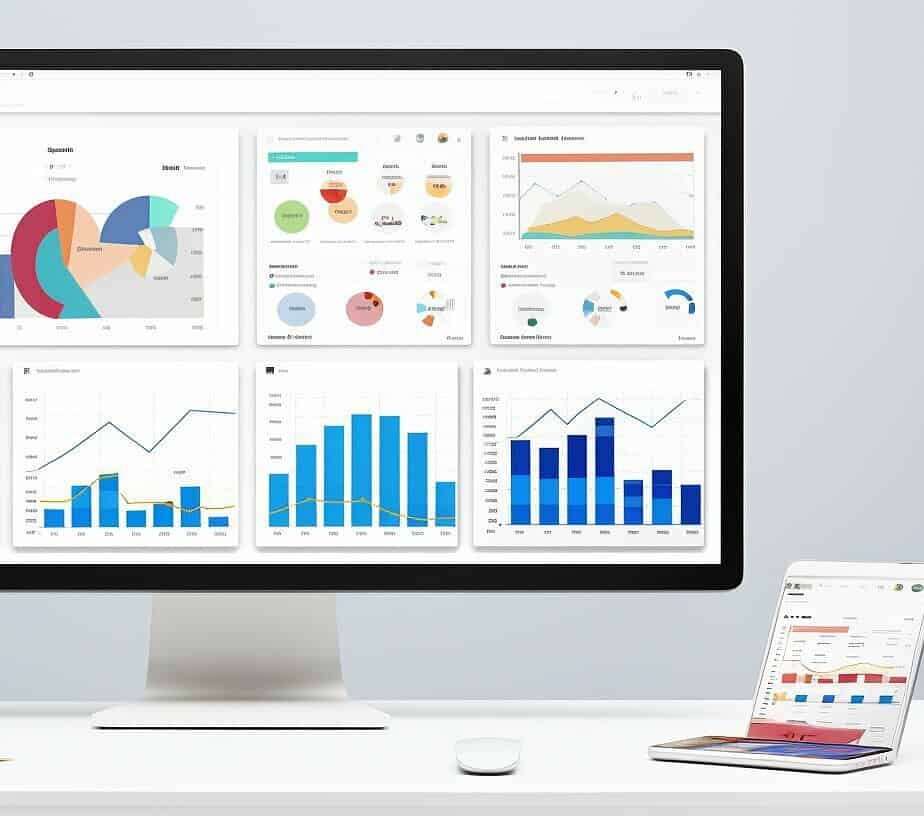Welcome to our article on No Code Data Integration Platforms, where we’ll explore the world of data integration solutions and integration tools. In today’s fast-paced and data-centric world, the ability to integrate data seamlessly and efficiently is essential for businesses of all sizes.
No Code Data Integration Platforms offer a solution to the problems businesses face when integrating data. By eliminating the need for coding knowledge, these platforms allow for a simpler and more streamlined workflow, increasing productivity and reducing errors.
In this article, we’ll dive into the different types of data integration solutions available, discuss the benefits of No Code Data Integration Platforms, highlight the features to look for when selecting a platform, and provide best practices for successful implementation.
Understanding Data Integration
Data integration is the process of combining data from different sources to create a unified view. It involves extracting data from multiple sources, transforming it into a common format, and loading it into a target system.
Automated data integration is a popular method used by organizations to streamline their data integration processes. This involves using specialized software to automatically extract, transform, and load data from various sources.
Cloud-based integration platforms are becoming increasingly popular as they offer organizations a more flexible and scalable approach to data integration. They allow organizations to integrate data from on-premise systems, cloud-based systems, and external sources, all within a single platform.
Data pipeline management is another important aspect of data integration. This involves managing the flow of data through the integration process, ensuring that data is accurate, consistent, and up-to-date.
Automated Data Integration
Automated data integration involves using specialized software to automatically extract, transform, and load data from various sources. This method is efficient and cost-effective, as it eliminates the need for manual data entry and processing. It also reduces the risk of errors, as the software is designed to handle complex data transformations and ensure data accuracy.
Cloud-based Integration Platforms
Cloud-based integration platforms are becoming increasingly popular as they offer organizations a more flexible and scalable approach to data integration. These platforms allow organizations to integrate data from a wide range of sources, including on-premise systems, cloud-based systems, and external sources, all within a single platform. They also provide advanced features for managing data flows, monitoring performance, and ensuring data quality.
Data Pipeline Management
Data pipeline management is an important aspect of data integration, as it ensures that data is accurate, consistent, and up-to-date. It involves managing the flow of data through the integration process, from extraction to transformation to loading. This ensures that data is transformed into a common format and loaded into the target system in a timely and efficient manner.
Benefits of No Code Data Integration Platforms
No code data integration platforms provide several benefits that can improve workflow and productivity. These benefits include:
- No-code ETL: With no-code data integration platforms, users can create data connections and pipelines without the need for coding knowledge.
- Application integration: These platforms are capable of integrating various applications and systems, allowing users to access data from different sources.
- Data syncing platforms: No code data integration platforms can sync data across different platforms, allowing for updates and changes to be automatically reflected in multiple systems.
By utilizing these benefits, organizations can streamline their data integration processes and make data more accessible to users across the organization. This can lead to better decision-making, improved collaboration, and increased efficiency.
“No code data integration platforms can streamline data integration processes and make data more accessible, leading to better decision-making, improved collaboration, and increased efficiency.”
Types of No Code Data Integration Platforms
When it comes to no code data integration platforms, there are several different options available. Each type of platform has its own benefits and drawbacks, and it’s important to choose the one that best fits your organization’s needs.
Drag and Drop Integration
One of the most popular types of no code data integration platforms is drag and drop integration. These platforms allow users to quickly and easily create data connections by simply dragging and dropping data sources onto a canvas and defining the data mapping.
While drag and drop integration is easy to use, it may not be the best choice for organizations with complex data integrations or large volumes of data.
Automated Data Integration
Automated data integration platforms use machine learning algorithms to automatically map and integrate data from different sources. These platforms are able to handle complex data integrations and large volumes of data, making them a good choice for larger organizations.
However, automated data integration platforms can be expensive and may require specialized technical knowledge to set up and maintain.
Cloud-based Integration Platforms
Cloud-based integration platforms are hosted in the cloud and can be accessed from anywhere with an internet connection. These platforms often offer features like real-time data synchronization and are ideal for organizations with multiple locations or remote workers.
However, cloud-based integration platforms may not be the best choice for organizations with sensitive data or strict security requirements.
Features to Look for in No Code Data Integration Platforms
No code data integration platforms are becoming increasingly popular, and for good reason. They offer businesses an easy and efficient way to manage their data and streamline their operations. If you’re in the market for a no code data integration platform, there are a few key features you should look for.
Integration Tools
One of the most important features to consider when choosing a no code data integration platform is the selection of integration tools. Look for platforms that offer a wide range of pre-built connectors and adaptors, as well as the ability to create custom connections when needed. This allows you to easily connect with all of your existing systems and streamline your workflows.
Data Integration Solutions
Another important feature to look for is a wide range of data integration solutions. Look for platforms that can handle a variety of different data types, including structured, semi-structured, and unstructured data. This ensures that you can easily manage all of your data, no matter what format it’s in.
No-Code ETL
Many no code data integration platforms offer a drag and drop interface for creating ETL (Extract, Transform, Load) workflows. This allows you to easily move data between different systems without the need for coding knowledge. Look for platforms that offer a user-friendly interface for creating ETL workflows, so you can get up and running quickly.
Automated Data Integration
Automated data integration is another important feature to consider. Look for platforms that offer automated data integration capabilities, including automated mapping, data cleansing, and data validation. This saves you time and ensures that your data is accurate and up to date.
Overall, when evaluating no code data integration platforms, it’s important to consider the integration tools, data integration solutions, no-code ETL, and automated data integration capabilities. By choosing a platform with these features, you can ensure that your business is able to manage its data efficiently and effectively.
Choosing the Right No Code Data Integration Platform for Your Organization
Choosing the right no-code data integration platform is critical to ensuring that your organization can take advantage of the benefits that these platforms offer. Here are some tips to help you evaluate different platforms and find the best one for your needs:
Consider Your Data Syncing Needs
One of the most important factors to consider when choosing a no-code data integration platform is your organization’s data syncing needs. Consider which platforms and applications you are using and which ones you need to integrate. Look for a platform that can handle the specific types of data syncing that you need.
Look for No-Code ETL Features
No-code ETL (Extract, Transform, Load) features are essential for simplifying the data integration process. Look for a platform that offers drag-and-drop ETL capabilities that do not require coding knowledge. This will allow your team to easily create and manage data connections without relying on IT.
Evaluate Application Integration Features
Application integration is a critical factor to consider when choosing a no-code data integration platform. Look for a platform that offers easy integration with the applications that your organization uses. This will help ensure that your data is synced and up-to-date across all of your tools and systems.
Consider Pricing and Support Options
Pricing and support options are important factors to consider when choosing a no-code data integration platform. Look for a platform that fits your budget and offers the support you need to ensure that your team can effectively use the platform. Consider options such as training and onboarding support to help your team get up-to-speed quickly.
By considering these factors, you can choose the right no-code data integration platform for your organization. Keep in mind that it may take some time to evaluate different platforms and find the best one for your needs, but the benefits of using a no-code data integration platform can be significant.
Common Challenges in Implementing No Code Data Integration Platforms
While no code data integration platforms offer many benefits, organizations may encounter some challenges when implementing these solutions. Some of the common challenges include:
| Challenge | Solution |
|---|---|
| Lack of Experience | Organizations may not have prior experience with no code data integration platforms. Seeking guidance from industry experts or attending training sessions can help overcome this challenge. |
| Choosing the Wrong Integration Tools | Without proper research and evaluation, organizations may end up selecting integration tools that do not fit their specific needs. It is important to carefully evaluate available options and select the solution that aligns with your organization’s requirements. |
| Difficulty Syncing Data Across Platforms | Organizations may have difficulty syncing data across platforms when using no code data integration platforms. Choosing a platform that offers data syncing capabilities can help overcome this challenge. |
| Not Enough Automation | No code data integration platforms rely heavily on automation for efficient data integration. Organizations that do not have enough automated processes in place may experience difficulties when using these platforms. |
| Lack of Ongoing Training and Support | It is important to have ongoing training and support for staff members when using no code data integration platforms. This can help prevent common mistakes and ensure that the platform is being used to its full potential. |
Overcoming these common challenges can help organizations successfully implement and use no code data integration platforms to improve their workflows and increase productivity.
Best Practices for Using No Code Data Integration Platforms
When using a no-code data integration platform, there are a few best practices to keep in mind to ensure that your organization is getting the most out of the platform. Here are some tips to help you optimize your platform for maximum productivity:
Choose the Right Data Integration Solutions
Make sure that the data integration solutions you choose are a good fit for your organization. Consider factors such as the volume and variety of data you need to integrate, as well as the types of applications and platforms you are working with. Look for solutions that offer flexibility and scalability, so that you can adapt to changing business needs over time.
Leverage Drag and Drop Integration
Many no-code data integration platforms offer drag and drop integration capabilities, which can help you create connections between different applications and platforms quickly and easily. Take advantage of this feature to simplify your workflow and improve productivity.
Train Your Employees
Make sure that your employees have the necessary training and support to use the platform effectively. Offer ongoing training to help them stay up-to-date on new features and best practices, and provide them with access to online resources and support forums to help them troubleshoot any issues that may arise.
Track Your Progress
Track your progress regularly to ensure that you are meeting your business goals and objectives. Use analytics and reporting tools to monitor key performance indicators and identify areas where you can improve your workflow or optimize your platform for better performance.
By following these best practices, you can ensure that your organization is getting the most out of your no-code data integration platform. Keep in mind that every organization is unique, so it’s important to evaluate your needs and goals carefully to find the right platform and approach for your specific situation.
Frequently Asked Questions About No Code Data Integration Platforms
As no-code data integration platforms become increasingly popular, it’s natural to have questions about how they work and what they can do. Here are some of the most frequently asked questions about no-code data integration platforms.
How do no-code data integration platforms work?
No-code data integration platforms allow users to create and manage data connections without the need for coding knowledge. They typically use drag-and-drop interfaces and pre-built connectors to simplify the integration process.
What types of integrations are available with no-code data integration platforms?
No-code data integration platforms can be used for a wide range of integrations, including application integrations, data syncing across platforms, and automated data integration.
How do I get started with using a no-code data integration platform?
Getting started with a no-code data integration platform is typically a simple process. Most platforms offer free trials or demos, so you can explore their features and see if they’re a good fit for your organization. Once you’ve chosen a platform, you can typically start creating and managing integrations right away.
What are some benefits of using no-code data integration platforms?
No-code data integration platforms offer several benefits, including the ability to save time and improve productivity by automating manual processes, the flexibility to create and manage integrations without coding knowledge, and the ability to sync data across platforms for better analytics and reporting.
Can I use a no-code data integration platform for my specific industry or business needs?
Yes, many no-code data integration platforms are designed to work with a wide range of industries and businesses. Whether you need to integrate customer data from a CRM system or automate data flow between two different applications, there’s likely a no-code data integration platform that can meet your needs.
What type of ongoing support can I expect when using a no-code data integration platform?
The level of ongoing support can vary between different platforms, but most offer some form of technical support, user guides, and training resources. Some platforms may also offer dedicated customer success managers or additional training and consulting services to help ensure you’re getting the most out of the platform.




0 Comments